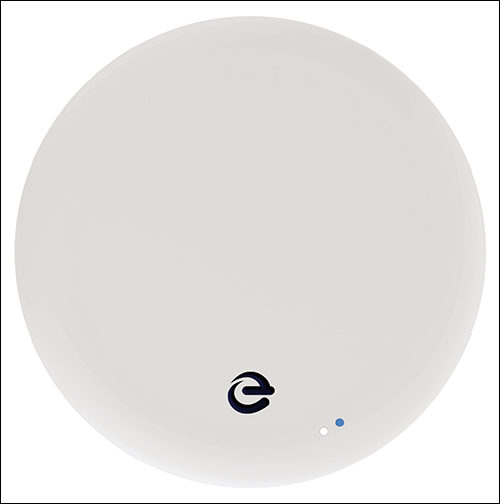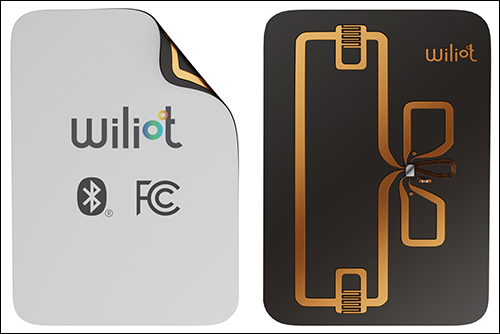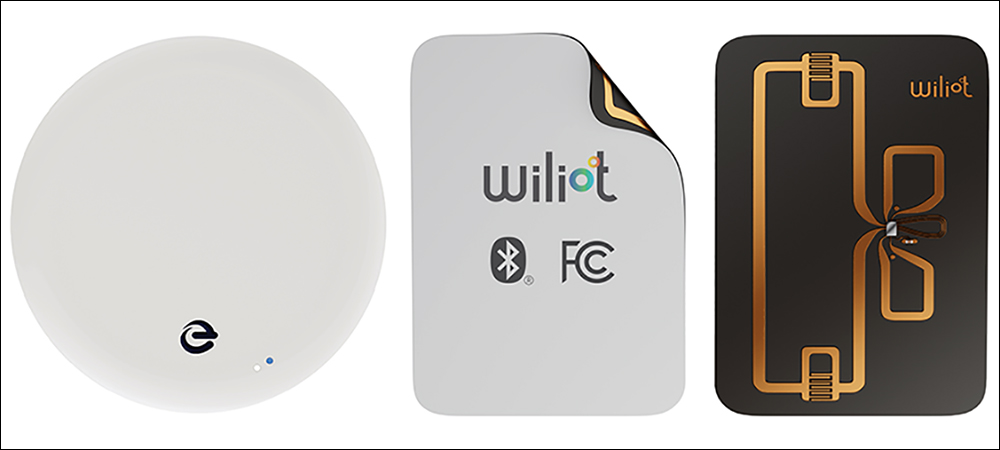- Beyond the Visibility of Passive RFID
- Designed for Ease of Deployment
- Transmitting at 15 Times More Power
Numerous fashion retailers have begun testing a real-time location system (RTLS) from Australian retail technology company Flagship to manage inventory, reduce shrinkage, and view shopper behaviors and sales trends. The solution leverages wireless power-charging technology from Energous, known as the WattUp PowerBridge.

Energous’s WattUp PowerBridge
Inventory is being tracked via Wiliot‘s battery-free IoT Pixel, with a Bluetooth Low Energy (BLE) tag on each product. Flagship’s cloud-based software captures and manages the collected data, helping stores to prevent out-of-stocks, meet online order requirements and increase sales. Each retailer piloting the system has deployed the PowerBridges and sensor tags at a single store. Among those is women’s and men’s fashion company Venroy. Following the pilots, the retailers could expand the offering to all sites.
The pilots, all of which are in Australian stores, are the first deployments of IoT Pixel tags energized by PowerBridges, the technology companies report. At each pilot location, Flagship’s solution automatically tracks the movements of merchandise throughout a store, in fitting rooms and in the back storage area. The system helps store managers view the movements of goods as they are put on display, tried on by customers or moved to another area. By capturing this data in real time, the retailers hope to better understand shopping experiences, while automatically notifying when products need to be replenished as they are sold, says Simon Molnar, Flagship’s founder.
The Flagship solution has been in the works since the company was founded more than a year ago. Molnar brings a technology background as a software engineer, as well as retail experience since his family operates jewelry stores in Australia. Molnar started working in online retail when he and his brother Nick launched ice.com (a URL now owned by a separate company) into the Australian market as iceonline.com.au to sell jewelry online. He developed ways to help retailers capture the end-to-end experience in a customer’s journey from the moment of first engagement through to sales and beyond.
Molnar discovered, when speaking with physical store retailers, that they had limited understanding of the inventory at their shops. “It seemed like there was this inherent understanding and expectation in retail,” he recalls, “that you just didn’t know what was happening in your stores apart from what was selling.” While online shopper behavior can be tracked by detecting which products are viewed and which are purchased, physical stores do not provide that kind of information. “So the goal for us was really to create more visibility in that brick-and-mortar world.”
Beyond the Visibility of Passive RFID
Knowing more about the locations and movements of merchandise, Molnar explains, can help stores better understand product performance and shopper interest. Passive UHF RFID tags on products are already being read via handheld readers or fixed portals at many stores for inventory-management purposes. However, he says, RFID-based solutions have limits. “There is little visibility into what happens in the store itself,” Molnar states, including where goods are shelved or displayed, when they are tried on, how often this occurs, and when they are misplaced or purchased.

Wiliot’s battery-free IoT Pixel
By obtaining information regarding the in-store movements of garments, Molnar says, companies can better strategize about what they sell, where they sell it, and how it is displayed and marketed. “They can see if an item is being looked at a lot and not being tried on,” he says. “The way a customer interacts with an item tells you a lot about it and gives you an opportunity to make real-time business decisions to maximize sales.”
The first technology pilots were launched three months ago by a trio of retailers, and several more are now preparing to deploy the technology. Testing started with basic battery-powered BLE tags applied to products, transmitting data to beacon receivers. Flagship was able to prove the solution could provide the real-time data stores were looking for, Molnar recalls. “Then we came across the level of sophistication that we can get out of Energous’s wireless powering devices” he says, using Wiliot battery-free tags, at which time the company “pivoted to this new hardware.”
The IoT Pixels draw power from the PowerBridges. “When we first installed [the technology] at the first retailer,” Molnar states, “it was very much a beta. We weren’t 100 percent sure what level or what percentage of visibility we would get.” However, he says, the percentage of tags that sent a response to the bridges “was beyond our wildest imaginations. We’re getting upwards of 99 percent of [tag] signals.” Flagship has deployed a few thousand tags at each store so far, and it can view location data about each tag in its cloud-based software.
Designed for Ease of Deployment
The installation process typically takes one or two mornings to complete, Molnar says. Flagship makes an onsite visit to tag merchandise by affixing IoT Pixel tags to product labels. In the future, Molnar says, tags can be provided at the point of manufacture, since the retailers make their own products. The unique ID number encoded on each tag is linked to data about the corresponding item.

Simon Molnar
A store deployment typically involves several dozen wireless chargers, according to Cesar Johnston, Energous’s CEO. The PowerBridges are mounted on ceilings and transmit the power required by the Wiliot tags, enabling them to transfer data. The devices also receive Bluetooth data, along with the location from which the tag signals originated, then filter that information and forward it to the Wiliot cloud.
The result, Johnston says, is real-time positioning of every tagged piece of merchandise. Energous’s technology is currently being used for a variety of applications, including asset management. “Our story is about wireless power networks being able to energize the world in a certified manner,” he explains, adding that Energous offers devices certified in the United States, the European Union, China, India and Canada.
For retailers, the data managed by Flagship offers a means of better managing stock levels and identifying goods customers require quickly, while also providing analytics. For instance, Molnar says, a retailer can use the insight provided regarding which products are tried on together in fitting rooms to style mannequins, “because they know this is how people are wearing their products.” They can also display popular products in the appropriate area of a store, or make changes to their planogram.

Cesar Johnston
The technology lets stores identify stock discrepancies, such as one site having too much stock or another having too little. Another potential benefit is shrinkage insight, Molnar says. The system can detect if a tag is no longer being read, indicating it has been removed from the store, and the last known read data can be compared against purchases to determine which item is being removed without a sale. Users can then know a product is likely being shoplifted, and the alerting data from the software enables managers to ascertain where and when that occurred. They can then check CCTV records to confirm the event.
Ahead of its pilots, Flagship spent months speaking to retailers and validating that their biggest challenges around shopping insights could be solved with the RTLS solution. In the future, the system could leverage the Wiliot tags’ sensing capacity—for instance, by using temperature data to manage store displays. “If the tags pick up that it’s a very cold morning on a spring day and their shop is heavily skewed toward summer product,” Molnar says, “then we can tell them, ‘OK, it’s a cold morning. Bring more knitwear out.'” In the long term, Flagship plans to sell its solution worldwide. “Our focus is on winning in our own backyard for now, so [we need to] make sure we get Australia right—and then… we’ll start looking at opportunities more globally.”
Transmitting at 15 Times More Power
Wiliot and Energous commenced their partnership approximately a year ago, when the two companies combined their offerings in the form of an evaluation kit that was released in January 2022 (see Evaluation Kit Targets Developers for Power-Harvesting IoT). That evaluation kit, Johnston says, includes Energous’s PowerBridges, as well as Wiliot’s tags and software for developers. For retail applications, the PowerBridges can energize electronic shelf labels.
Energous’s products are interoperable with IoT devices that employ the Bluetooth protocol, Johnston says, and are expected to be used at smart office spaces, industrial sites and healthcare facilities. That means tracking sensor data, such as temperature and air quality, with battery-free sensors, as well as detecting the presence and locations of assets. Energous offers its technology in the form of fundamental building blocks, he says, based on the needs of a particular solution provider or end user.
Energous has announced that it has received U.S. Federal Communications Commission (FCC) authorization for 15 watts of conducted wireless power transfer. This, according to the company, will enable its products to transmit up to 15 times more power than previously allowed, without distance limitations.
Key Takeaways:
- Retailers have deployed Flagship’s RTLS solution, which offers a view into the location of inventory throughout a store, thereby providing shopping behavior and inventory location data.
- Energous is growing its offerings, with authorization to increase the power transmissions that energize battery-free, wireless sensors.


